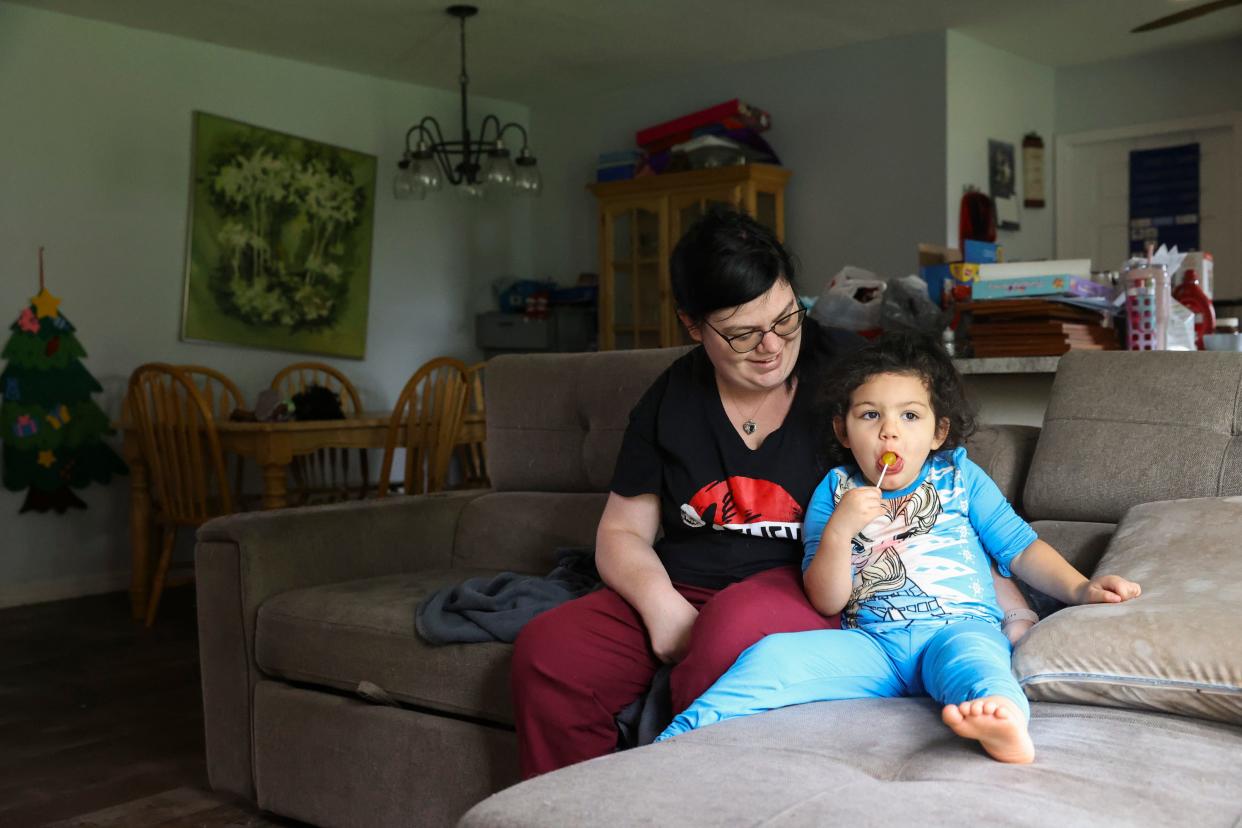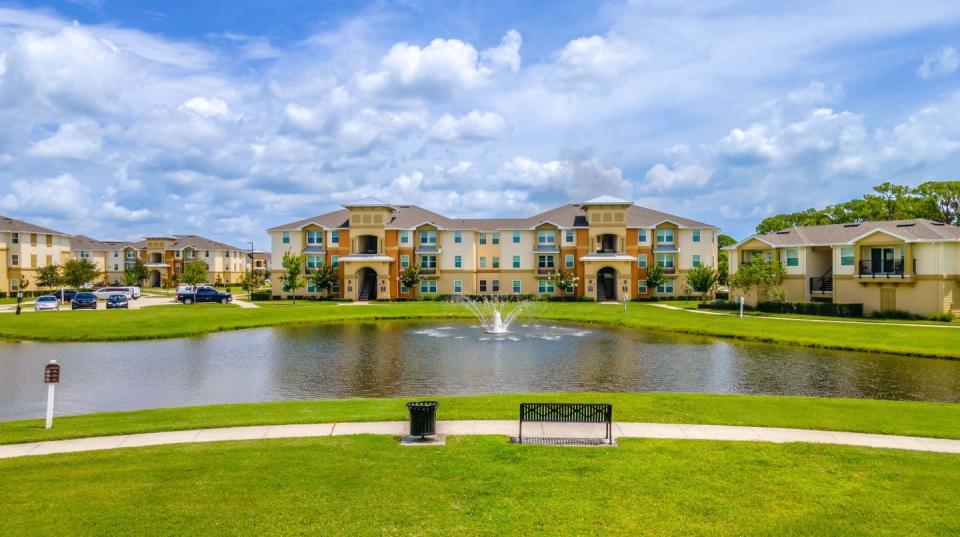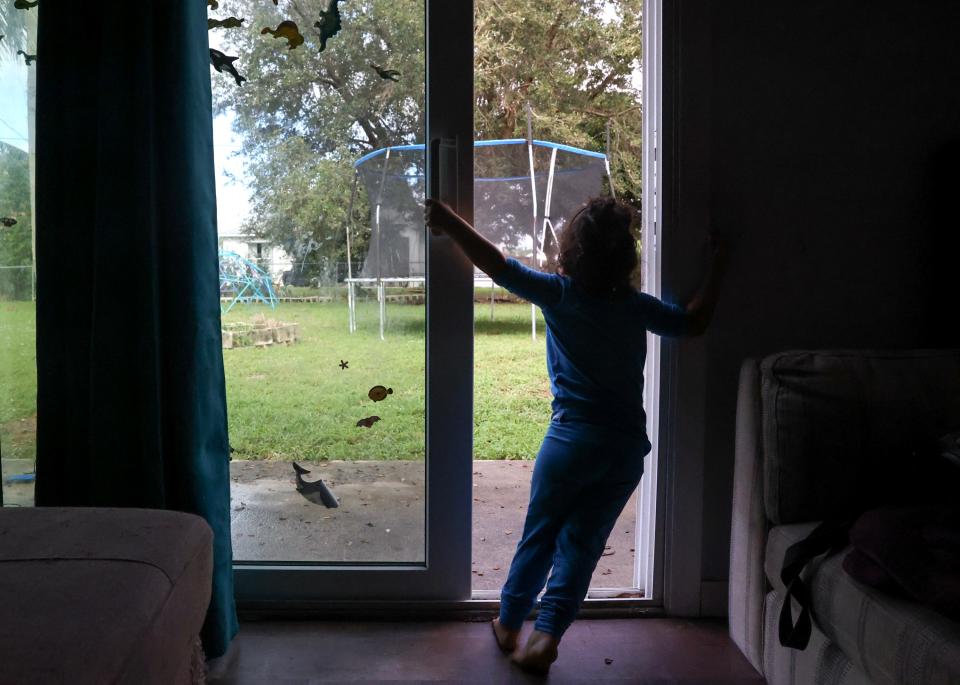Low-income families weary as Section 8, public housing waitlists stay closed: ‘No way we could thrive’

For six years, Reyanna Langevin has been waiting for an affordable home: one where she doesn’t have to sleep on the couch or compete with her parents for space, where she and her fiance can accommodate their three children. The seven of them share a two-bedroom, ranch-style house in Port St. Lucie.
“I have a decent-paying job, I have a bachelor’s degree. I have everything that everyone tells you that if you get, you’d be able to thrive,” said Langevin, 29. “There’s just no way we could thrive in this market.”
Around April 2018, then the single mother of a 6-month-old, she trekked to the Housing Authority of the City of Fort Pierce (FPHA) to apply for rental assistance. She recalled completing paperwork and providing documentation for the federal Housing Choice Voucher program, commonly known by its former name, Section 8. Langevin left under the impression she’d been put on the waiting list.
Yet the list had been shuttered since May 2015. It’s still closed, nearly nine years later.
FPHA, which oversees St. Lucie County, provided TCPalm with the names of the 542 people on its Section 8 waitlist as of November 2023; Langevin wasn’t on it. Further muddying things, Langevin said within the last year she received a mailer regarding her intent to remain on the list. It required only updated contact information, which she found strange.
“They weren’t confirming my income, they weren’t confirming how many kids I had,” said Langevin, who is unsure she still qualifies for housing assistance. “Six years is a long time; so much could have changed.”
TCPalm solved part of the mystery: FPHA confirmed Langevin is on the waitlist for public, not Section 8, housing. The mix-up is common.
“People get confused as to what program they are applying for,” said FPHA Executive Director Rosetta Washington.
Though agency records indicate she’s been on the public housing waitlist since early 2020, Langevin is positive she registered in 2018. Regardless, her predicament illustrates the need for better education and communication between housing authorities and the public, she said.
“I don’t think I know enough, apparently, to even know the differences (between public and Section 8 housing),” Langevin said. “I’ve still been on a waitlist for a long time with no information.”
St. Lucie Section 8 residents spent 7+ years on waiting list
The plight of prospective Section 8 residents on the Treasure Coast is bleak, whether they’ve been on a years-long waitlist or waiting for a list to open. It’s worst in St. Lucie, the region’s largest and most populous county.
In 2022, St. Lucie residents living in Section 8 housing had spent an average of 85 months — over seven years — on the waitlist, according to records obtained from the U.S. Department of Housing and Urban Development. Only the Big Bend’s Levy County had a longer average wait time in Florida: 110 months, nearly a decade.
Former FPHA programs manager Brandie Savoy worked at the agency from late 2015 through mid-2023; the waitlist remained shuttered the entirety of her tenure.
“I answer emails every single day about people inquiring about either rental assistance or, ‘How do I get on Section 8?’ ‘How do I apply for public housing?’ ” Savoy told TCPalm last year. “I do have to inform them that both lists are, unfortunately, closed.”
Washington expects FPHA’s Section 8 waitlist will stay closed through 2024. She added she was unsure whether the list had ever before been closed for years on end.
The agency purges the waitlist periodically but hasn’t done so since 2020, Washington said. Some applicants move out of the area, while others experience income changes impacting their eligibility. Some die waiting. This administrative cleanup has allowed some waitlisted people to trickle into homes, but not for the list to welcome new waiters.
What’s the difference between Section 8 and public housing?
Whereas public housing residents live in a designated housing project, Section 8 participants lease a home of their choosing in the private market.
Housing agencies such as FPHA receive HUD funds, which they transfer to landlords on behalf of Section 8 participants. Lessees then are responsible for paying the difference between the rent and subsidy.
To qualify for Section 8, an applicant’s gross annual income may not exceed 50% of a metropolitan statistical area (MSA)’s median family income, as determined by the U.S. Department of Health and Human Services’ poverty guidelines. In 2023, the income limit for a family of four was $39,600 in Indian River County and $42,350 in Martin and St. Lucie counties.

However, housing authorities are obligated to allocate 75% of vouchers to people whose incomes don’t exceed 30% of the local median income: $30,000 in each Treasure Coast county.
Martin falls under the purview of the Stuart Housing Authority, which FPHA manages. Its Section 8 waitlist contained 21 applicants as of November. Washington said she didn’t know the last time that list had been open, only that it’s been closed since her agency took over in 2018.
Along with six other Florida counties, Martin Section 8 residents in 2022 had spent an average 17 months on the waiting list, HUD records show.
Indian River residents had spent about seven months on the list — far shorter than the three- to six-year wait estimated on the Indian River County Rental Assistance Program’s website. As of November, 80 people were on the waitlist, which had been closed since October 2019, according to housing services manager Stacey Bush.
Both Section 8 and public housing cater to older people and people with disabilities in addition to families, and HUD operates both programs. Public housing also is income-based. The major difference is the government owns public housing projects; private landlords own Section 8 properties.
St. Lucie also had one of the longest public housing wait times in Florida in 2022. Locals living in public housing had spent an average of 57 months — nearly five years — on the waitlist, behind Miami-Dade, Leon and Sarasota counties. Martin had the eighth-longest wait time: 41 months.
Martin’s public housing waitlist was open as of Dec. 29. The St. Lucie list had opened for nine days in September for three-bedroom units but otherwise remained closed, according to the FPHA website.
Indian River public housing data is unavailable in federal records, as the county rental assistance office doesn’t offer public housing, Bush said. While the separate Indian River County Housing Authority owns the Victory Park and Orangewood Park apartments in Vero Beach, rental priority is given to domestic farm workers under the U.S. Department of Agriculture Rural Development program.
Treasure Coast fair market rent among highest in US
The nonprofit Florida Housing Coalition isn’t affiliated with Section 8 but advocates for community development resources, including affordable housing. A perfect storm of economic circumstances fuels housing authorities’ long waitlists, according to CEO Ashon Nesbitt.
“There has long been — and will continue to be — high need for rental assistance, as housing costs rise faster than wages,” Nesbitt wrote in an email to TCPalm.
The Port St. Lucie MSA encompasses Martin and St. Lucie counties. In 2014, the fair market rent for a two-bedroom apartment in the region was $926, according to RentData.org. That monthly cost is projected to be $1,573 in 2024 — an 8% year-over-year increase and more expensive than 95% of fair market rents nationwide.
Indian River County falls within the Sebastian-Vero Beach MSA. Its projected 2024 fair market rent for a two-bedroom apartment is $1,462, up from $864 in 2014. This constitutes a 16% year-over-year increase and a more expensive rent than 93% of the country.
The COVID-19 pandemic only tightened the rental market, Nesbitt indicated.
“Voucher programs are limited in the number of households they can serve, based on federal appropriations,” he said. “Therefore, everyone who qualifies may not be able to receive a voucher.”
‘National crisis’: More money needed for Section 8 vouchers
On any given night in 2022, nearly 850 people on the Treasure Coast experienced homelessness, according to the National Alliance to End Homelessness. Langevin is grateful she and her family weren’t among them. Still, their living situation isn’t ideal.
“It’s so hard to parent when your parents are parenting with you,” she said. “It just brings up a lot of dysfunction when you live in overcrowded houses, and when you’re living in multigeneration family houses.”
Such multigenerational households, in which at least three generations live under one roof, are on the rise. About 6 million were in the U.S. in 2020, up from 5.1 million in 2010, census data shows. Overcrowded homes, though, are a public health concern.
Stunted child development, stronger negative reactions to social hassles and increased risk of spreading infectious diseases are among the adverse outcomes linked to overcrowding, as noted in a 2022 study in the Journal of Housing Economics. A University of California, Irvine researcher estimated a 10% increase in Section 8 vouchers would reduce the likelihood a housing unit is overcrowded by 0.081 percentage points.

“Stated differently, an additional 595 housing vouchers alleviates overcrowding in 69 homes,” wrote study author Kyle Kole. “Vouchers address overcrowding by enabling recipients who have doubled-up with higher-income households to move into more suitable living arrangements.”
The lack of affordable housing is a “national crisis,” said Joe Bohn, an associate professor at the University of South Florida College of Public Health, noting even private-sector involvement may not stanch the bleeding.
“There’s going to be some philanthropy and some social responsibility but, at the end of the day, it’s a private company and its purpose is to turn a profit,” he said. “An increase in those federal dollars is what it’s probably going to take.”
Meantime, the waiting game continues for people like Langevin, left with few resources other than hope for a home.
“I can’t fathom what happens to families,” Bohn said. “They can’t survive without housing for eight years.”
TCPalm reporter Gianna Montesano and former reporter Catie Wegman contributed to this report.
Lindsey Leake is TCPalm’s projects reporter. She has an M.A. in Science Writing from Johns Hopkins University, an M.A. in Journalism and Digital Storytelling from American University and a B.A. from Princeton University. Follow her on X @NewsyLindsey and Facebook @LindseyMLeake. Call her at 772-408-5315 or email her at lindsey.leake@tcpalm.com.
This article originally appeared on Treasure Coast Newspapers: Section 8 Florida: Affordable housing Martin, St. Lucie, Indian River

